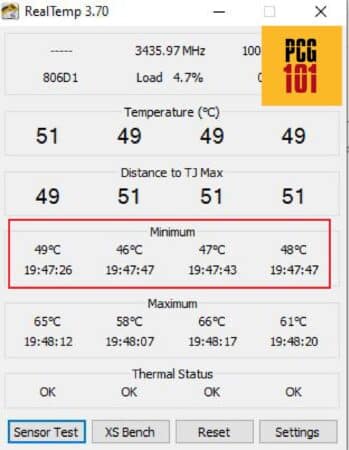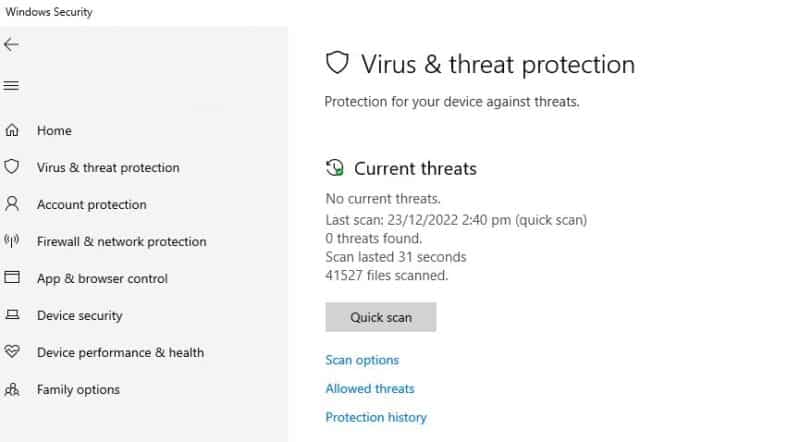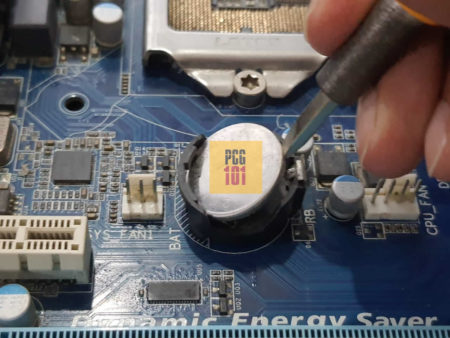One of the most dreadful issues you can face with any PC is the infamous Blue Screen of Death. If you have been around computers for a long time, you may have experienced this at one point or another.
Blue Screen of Death seems to appear randomly. It often happens when you have recently installed new hardware or if you have updated your PC. It can also occur when you boot up a newly bought or built PC.
This issue often asks, “Can the motherboard cause a blue screen of death?” The answer to the question, however, is a partial yes. Almost any hardware installed internally or plugged in externally can cause Blue Screen of Death.
In the following text, I will clarify the Blue Screen of Death and whether a motherboard can cause it.
TABLE OF CONTENTS
What is the Blue Screen of Death?
The Blue Screen of Death is a name given to an error that freezes your PC randomly and produces a blue screen with the highlighted error message. This is often followed by your PC shutting down entirely.

The majority of the time, this issue is NOT a cause for concern, mainly if it happens once in a blue moon.
However, it could point to a serious underlying issue severe happens regularly. Since this issue happens randomly, it could seriously hamper your work or gaming sessions.
Can the Motherboard Cause a Blue Screen of Death?
Many issues can cause the Blue Screen of Death (BSOD). The problems can be related to both hardware and software.
As such, BSOD can undoubtedly be caused by your motherboard. However, you must first isolate the issue to test whether your motherboard is the real culprit.
You can check if the BSOD is being caused by your motherboard using the process of elimination:
1. Did You Recently Update Your Windows or a Driver?
We can begin the process of elimination by first looking at the most simple and easily fixable issues.
Did the BSOD appear AFTER a recent Windows or Driver update? If you have updated the drivers for your motherboard, graphics card, etc., this could cause the BSOD.
To fix this, you can use the built-in Windows Recovery utility to return to the last known exemplary configuration.

You can access Windows Recovery through the Control Panel or by typing Recovery in the Windows Search Bar.
Once in Windows Recovery, select “Open System Restore” to uninstall any recent drivers or updates.
2. Unplug All External Hardware
This is another relatively simple step.
USB devices, particularly USB storage drives, can often create software conflicts.
If a peripheral device is a cause for issues, you can fix this by simply removing them.
3. Check for High Temperature
If any of your hardware is heating up beyond its limit, then both the hardware and Windows have a fail-safe system for turning your PC off. Before the fail-safe system goes into action, you may see a BSOD.
Two main culprits can often exceed their nominal temperatures: CPU and Graphics Card.
If you haven’t provided adequate cooling to your PC OR the thermal paste between the CPU and the CPU fan has worn off, that could result in exceedingly high temperatures.
High temperatures can often manifest themselves in the form of your PC lagging. While gaming, you may often see frame drops and stutters.

Fortunately, checking the temperature is relatively easy. You can use simple utilities like RealTemp for checking CPU temperature and GPU-Z for checking graphics card temperatures.
You have to ensure the temperatures are safe a safe range (Lower than 90° C or below, ideally less than 60° C).
4. Check for Viruses
Another fairly common cause of BSOD is viruses. They cause BSOD more often than motherboards.
Viruses can manifest in many ways, including your PC slowing down, weird files appearing in folders, or the worst-case scenario: BSOD.
Viruses can easily be removed through up-to-date antivirus software. You do not need to purchase expensive antivirus software. You can use the Built-in Windows Security / Windows Defender utility.
You do have to ensure that the Virus Signatures are constantly updated. You can do this through the Windows Update service.

Of course, if the BSOD issue on your PC is so severe that you can’t even boot up your Windows, you wouldn’t be able to access any of the built-in utilities, including Restore or the Security utility, or even check the temperature utilities.
This would naturally bring you to the following steps:
5. Check Internal Hardware
We can start figuring out whether the issue lies with internal hardware by first performing a preliminary inspection.
For starters, if you have built a new PC, please ensure that ALL the hardware is correctly inserted into their respective slots and that all the power cables from the Power Supply Unit are connected.
Also, many dedicated graphics cards require multiple PCIe power cables from the PSU. Could you make sure they are all connected?
A loose graphics card or SATA connector often leads to hardware issues, including BSOD.
Removing the CPU fan can also check if the CPU thermal paste has worn off.
If the PC is old, there is a very high chance that the accumulation of dust and debris could be causing hardware issues. As such, could you give your PC a thorough cleaning?
6. Reset BIOS and Overclock
You can also try resetting BIOS to its default settings. You can do this either through the BIOS itself or by removing the CMOS Battery from the motherboard and putting it back in after 5 seconds.

Resetting BIOS is beneficial if you have recently overclocked your CPU or GPU. Unsafe overclocking is one of the major causes of BSOD.
Resetting BIOS brings the clock speeds back to their default state.
7. Disconnect Internal Hardware
This is a more technical step.
You need to remove all the excessive hardware and leave just the bare minimum to see whether the issue is with the motherboard.
A PC needs a CPU, a RAM stick, and a Boot Drive to start Windows.
So if you have two RAM sticks, start by removing one of them. Could you remove the RAM stick and restart your PC? Bad RAM sticks are another major cause of BSOD.

Do the same for hard drives. Keep your boot drive (the one with Windows) plugged in and remove the rest (disconnect SATA data cables).
And finally, could you remove the dedicated graphics card from your PC? Once you remove the dedicated graphics card, connect your monitor to your motherboard video output ports for display.
You can remove the components incrementally with restarts each time you release a new member to zero in on the culprit.
You can also check RAM sticks, the drives, and the dedicated graphics card on a different PC to verify if they function correctly.
Once you strip all the internal hardware and if BSOD persists, you will be left with three culprits:
- Boot Drive
- CPU
- Motherboard
You can test your Boot Drive on a different PC, like the RAM sticks, to filter down to two culprits: the CPU or the motherboard.
At this point, could you call up your motherboard manufacturer and ask them for repairs?
8. Start PC in Safe Mode
While you are at, you can also turn on your PC in Safe Mode.
Safe Mode strips Windows just down to the most basic functions. If your PC typically works in Safe Mode and no instances of BSOD appear in Safe Mode, then the issue is most likely with the software, and your motherboard is fine.
You can learn how to start a PC in Safe Mode here.
9. Reinstall Windows
If the boot drive is failing, your PC works fine in Safe Mode but not usually, or if a Virus has damaged the files beyond repair, then it would be wise to do a clean reinstall of your Windows.
10. Test the Motherboard on a Different PC
If all else fails, you can use your motherboard with a completely different PC.
This, however, is a difficult task. This requires not only good technical expertise on your part but also the right compatible hardware, including a compatible CPU and RAM sticks.
Testing a motherboard with a different system is generally not an adventure you can do easily. You will likely have to refer to a technician or contact the motherboard manufacturer.
Final Words
Long story short, motherboards CAN cause Blue Screen of Death, BUT they are NOT the only cause.
As such, to zero in on the actual cause of BSOD, you often have to start a process of elimination, as BSOD is an error caused by many factors relating to hardware and software.
Frequently Asked Questions
1. How can I tell if a blue screen of death is caused by a motherboard issue, and what diagnostic tools can I use to identify the problem?
A blue screen of death can be caused by a variety of issues, including problems with the motherboard. Some common symptoms of a motherboard-related blue screen of death include error codes or messages related to hardware failures.
To diagnose the problem, you can use various diagnostic tools such as Windows Memory Diagnostic, Event Viewer, or hardware diagnostic software provided by your motherboard manufacturer.
2. What are some of the most common hardware problems with motherboards that can cause blue screen of death errors, and how can they be resolved?
Some common hardware problems with motherboards that can cause blue screen of death errors include faulty RAM, damaged components, or outdated firmware.
To resolve these issues, you may need to replace the faulty hardware, update the firmware, or perform a clean reinstall of your operating system.
3. How often do motherboard-related blue screen of death errors occur, and what factors can increase the likelihood of experiencing this issue?
Motherboard-related blue screen of death errors can occur occasionally, and the frequency of occurrence can vary depending on the specific hardware and software configurations. Some factors that can increase the likelihood of experiencing this issue include outdated firmware, incompatible hardware, or faulty components.
4. How can I prevent motherboard-related blue screen of death errors from occurring, such as through regular maintenance or upgrades?
To prevent motherboard-related blue screen of death errors from occurring, you can take several preventive measures such as installing the latest firmware updates, using compatible hardware components, maintaining proper cooling of your system, and running regular hardware diagnostics. Additionally, keeping your operating system and drivers up-to-date can also help prevent blue screen of death errors.
5. If I suspect that my motherboard is causing blue screen of death errors, what should I do to troubleshoot the issue and determine if a replacement is necessary?
If you suspect that your motherboard is causing blue screen of death errors, you can start by running hardware diagnostics and updating the firmware and drivers.
If the issue persists, you may need to replace the faulty hardware components, such as RAM or the motherboard itself.
It’s recommended to consult with a professional or the manufacturer’s support team to determine if a replacement is necessary.
